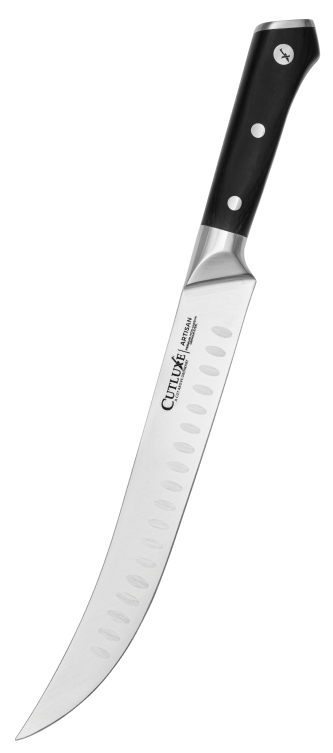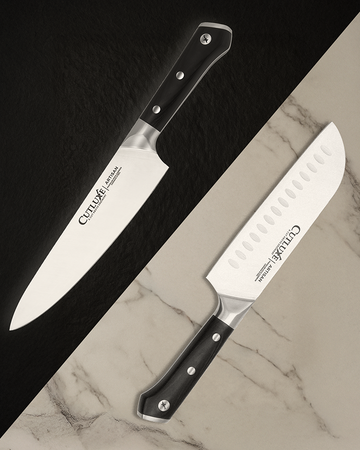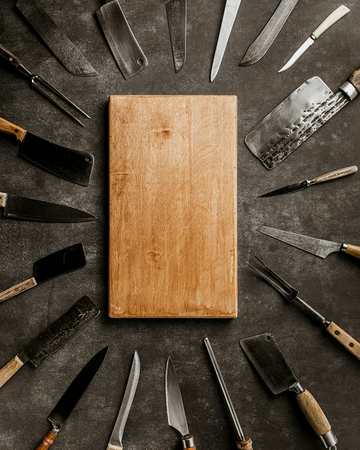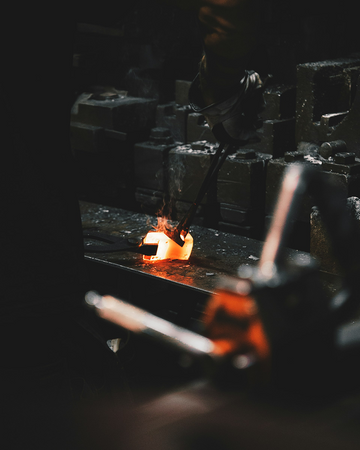Unlike your standard kitchen knives, the cimeter—also known as the scimitar knife—is designed specifically to handle the tough, demanding tasks of cutting large slabs of meat with precision and ease. Whether trimming fat, slicing brisket, or filleting large cuts, this curved blade tool has earned its place in professional kitchens and butcher shops worldwide.
In this article, we’ll dive deep into what makes the scimitar knife unique, explore its history, compare it to other butcher knives, and explain why it remains indispensable for meat experts. We’ll also look at how to use it safely and what to consider when choosing the best scimitar knife, especially from the Cutluxe line crafted for professionals.
What Is a Scimitar Knife? Definition and History
The scimitar knife is a large, curved blade designed primarily for butchering and meat-cutting tasks. Often referred to as a scimitar knife, its distinctive shape resembles the Middle Eastern scimitar sword—hence the alternative name. The blade typically ranges between 8 to 14 inches long and features a pronounced curve, allowing for smooth slicing motions that minimize effort while maximizing precision.
Historically, the scimitar knife’s design was inspired by the curved swords used by warriors in regions such as the Middle East and Central Asia. The shape proved highly effective for slicing through tough materials, and butchers adapted this concept for meat cutting. Over time, the scimitar knife became a staple tool in meat processing, prized for its ability to handle large cuts, especially beef brisket, with accuracy and ease.
Today, pitmasters and butchers around the world trust the scimitar knife for its specialized role. The scimitar knife’s curved blade allows for long, sweeping cuts that maintain the integrity of the meat fibers, making the scimitar knife perfect for tasks that require both power and finesse. Choosing the right scimitar knife can elevate your meat preparation to a professional level.
Scimitar Knife vs Other Butcher Knives
Compared to other butcher knives, the scimitar knife’s curved design sets it apart. While cleavers and boning knives excel at chopping through bone or intricate deboning, the scimitar focuses on slicing large muscle groups cleanly. Its shape promotes fluid slicing motions, reducing the risk of tearing the meat.
Traditional butcher knives usually have straighter blades and are used for general-purpose cutting. The scimitar’s curvature makes it particularly efficient for trimming fat and cutting thin slices without exerting excessive pressure. This specialized form means it complements other knives in a butcher’s toolkit, offering precision where a straight blade might struggle.
Why Butchers Rely on the Cimeter Knife
Butchers rely on the scimitar knife because it marries versatility with specialization. Whether breaking down primal cuts or preparing meats for retail, the scimitar knife excels at cutting large portions quickly and accurately. Its design reduces hand fatigue during long sessions, allowing professionals to work efficiently without sacrificing control.
Additionally, the curved blade helps separate muscle groups cleanly, which is essential for maintaining the quality and appearance of the meat. Butchers also appreciate the scimitar knife’s ability to trim fat smoothly, making the scimitar knife an all-around indispensable tool for high-quality meat preparation.
The right scimitar knife can transform a butcher’s workflow, delivering unmatched precision and ease.
Cimeter Knife Uses for Meat Cutting and Trimming

- Effortless meat trimming tool
- Razor-sharp granton blade edge
- Full-tang for superior control
- German steel, rust-resistant build
- Ergonomic pakkawood handle grip
The primary uses of the scimitar knife center on tasks that require precision and control when handling large cuts of meat. Here are the key functions:
- Cutting Large Meat: The long, curved blade of the scimitar knife is ideal for slicing through big slabs such as brisket, pork shoulders, or roasts. The curve facilitates long, sweeping cuts that reduce saw-like motions and preserve meat texture.
- Filleting:While not a fillet knife per se, the scimitar knife’s shape allows butchers to remove large muscle sections cleanly, setting up cuts for further processing.
- Trimming Fat: The curved edge enables precise fat removal, allowing pitmasters and butchers to prepare meats that are leaner or have the right amount of fat cap for flavor and tenderness. The versatility of the scimitar knives makes them an essential tool in any meat preparation.
- Thin Cutting: The blade’s shape of the scimitar knife supports delicate slicing, producing thin, even cuts perfect for presentation or specific recipes.
Ideal for Precision Slicing and Fat Removal
One of the scimitar knife’s standout advantages is its precision in slicing and trimming. The curved blade naturally follows the meat’s contours, making it easier to separate fat layers from muscle. This precision is crucial for pitmasters aiming to balance flavor with texture, especially when preparing barbecue cuts where fat plays a key role.
How to Hold and Use a Scimitar Safely
Proper technique is vital to get the most from a scimitar knife while ensuring safety:
- Grip: Hold the handle firmly with your dominant hand, keeping your fingers curled to avoid slips when using the scimitar knife. This grip is crucial for butchers to maintain control during detailed cuts.
- Cutting Motion: Use smooth, sweeping strokes that leverage the scimitar knife’s blade curve. Avoid chopping motions that can damage the blade or the meat. Butchers rely on this motion to maximize precision and efficiency.
- Body Position: When using scimitar knives, keep the meat stable with your non-dominant hand, ideally using a meat holder or gloves for grip and protection. Proper body positioning is key to safe and effective cutting with any knife.
- Maintenance: Regular honing and sharpening maintain the scimitar knife’s sharpness, essential for clean cuts and reduced injury risk.
Mastering the use of your knives and choosing the right knives for each task is key to achieving precision and safety every time you cut.
Best Cimeter Knife by Cutluxe – What to Look For
When choosing a scimitar knife, professionals look for specific features that optimize performance and comfort. The Cutluxe line offers models tailored for pitmasters and butchers who demand quality knives.
- Length: Choose a blade length that suits your primary tasks, usually between 10 and 14 inches for maximum versatility in a scimitar knife, ideal for butcher work.
- Steel Quality: High-carbon German stainless steel is preferred for its durability, corrosion resistance, and ability to hold a sharp edge—key qualities in any reliable scimitar knife.
- Handle: Ergonomic, moisture-resistant handles made from stabilized wood or composites provide grip and comfort for extended use on your scimitar knife, crucial for butchers during long sessions.
- Balance: Proper balance between the blade and handle of a scimitar knife reduces fatigue and increases control during long prep sessions, making every cut safer and more precise with your knives.
Choosing the right knives ensures that your cutting experience is smooth, efficient, and perfectly suited to the task at hand.
Curved Blade Design and Benefits
Cutluxe’s scimitar knives feature expertly crafted curved blades designed for effortless slicing. The curve enhances the cutting angle of the scimitar knife, allowing for cleaner, more precise cuts while preserving the meat’s texture.
This design reduces the effort required, making it easier for butchers to work through large or tough cuts. Butcher professionals appreciate how the scimitar knives combine power and precision in every slice.
Handle Comfort and Control for Long Sessions
Recognizing that butchers and pitmasters spend hours with their scimitar knives, Cutluxe focuses on handle comfort. Their handles are ergonomically shaped to fit naturally in your hand, reducing strain and providing a secure grip, even when wet or greasy.
This control is crucial for both safety and efficiency in professional kitchens where knives are used continuously.
Choosing the right knives with comfortable handles makes all the difference during long prep sessions, ensuring you can work efficiently without fatigue.











